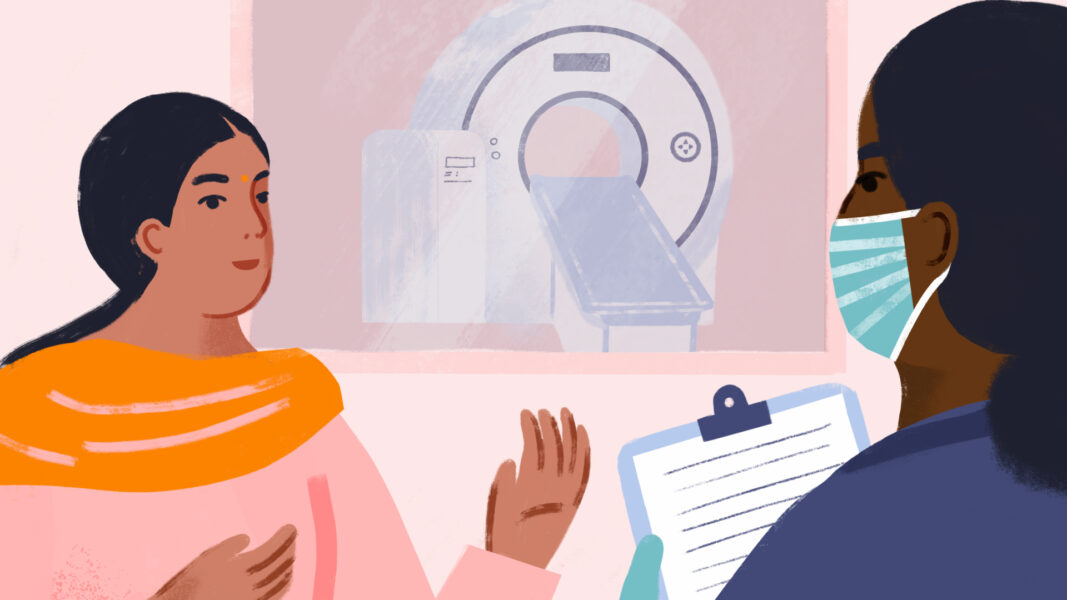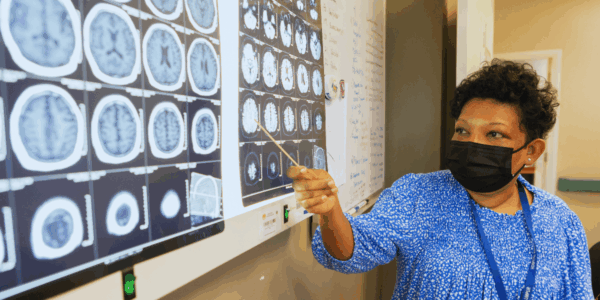What do the updated diagnostic criteria mean for me?

The McDonald criteria for diagnosing MS have been updated to speed up diagnosis and improve accuracy. But what do the criteria updates mean for you? The 2024 additions will have a different impact depending on whether you are already diagnosed, awaiting diagnosis, or working to improve MS healthcare in your country. Read on to find out more.
I’m already diagnosed with MS
For most people who have MS, the new criteria will not change your existing diagnosis. However:
- If your diagnosis was uncertain or under review, you may find that the new criteria help confirm (or rule out) MS more quickly.
- You may wish to discuss the changes with your neurologist if you have questions about your diagnostic journey.
- If you worry about family members or friends developing MS, the path to diagnosis, if needed, could be faster and more precise.
I’m not yet diagnosed with MS but am experiencing symptoms
The revised criteria are designed to shorten the often stressful and uncertain wait for diagnosis:
- The removal of the ‘dissemination over time’ requirement means that a diagnosis can sometimes be made after a single relapse or symptom if other evidence is present.
- The inclusion of the optic nerve as a diagnostic region broadens the range of evidence that can be used by clinicians to make a diagnosis.
- If you have been diagnosed with RIS, there are now clear steps for making a diagnosis of MS, which could lead to earlier monitoring and treatment.
I’m a healthcare professional
The 2024 revision of the McDonald criteria introduce changes to the diagnostic approach that can impact clinical practice. Familiarise yourselves with the updated McDonald Criteria guidelines for a more unified approach to diagnosing MS, including new tests for diagnosis as well as specialised criteria for diagnosing children and people over 50. You can learn more on the ECTRIMS website.
I’m a member of an MS organisation
The potential benefits of the revised criteria will only be experienced by people if healthcare systems adopt the new criteria and can provide access to the necessary diagnostic tools. MS organisations have a crucial role in raising awareness of the 2024 diagnostic criteria and advocating for them to be incorporated in national guidelines. In countries with limited access to OCT or visual evoked potentials, the changes strengthen the case for advocacy to expand these services too. MS organisations should aim to:
- Communicate: Share clear, accessible explanations with neurologists (especially those who are not specialised in MS), ophthalmologists, and allied health professionals.
- Train: Working in partnership with professional organisations (e.g. neurology academies), facilitate training and awareness sessions to build confidence in applying the criteria.
- Advocate: Push for inclusion of the criteria in national guidelines and for improved access to diagnostic tools, particularly MRI, OCT and KFLCs.
- Support implementation: Work with healthcare systems and professional bodies to reduce barriers to adoption, including addressing misconceptions and resource constraints.
You can learn more about how the McDonald criteria were updated and what it means for people affected by MS and MS organisations on the MSIF website.
Glossary
MRI: Magnetic Resonance Imaging: A medical imaging technique that uses strong magnetic fields and radio waves to create highly detailed pictures of the inside of the body, including the brain and spinal cord.
KFLCs: Kappa Free Light Chains: A type of protein produced by specialised immune cells called plasma cells. Elevated levels found through a blood test can indicate immune cell disorders.
DIT: Dissemination in Time: Evidence that multiple sclerosis (MS) lesions have appeared at different points over time, indicating the disease is progressing and affecting multiple areas of the central nervous system, as confirmed by MRI scans or clinical relapses.
RIS: Radiologically Isolated Syndrome: A condition where a person has brain or spinal cord lesions that look like multiple sclerosis (that might be picked up on an MRI scan taking place for a different reason, such as migraine) but has no MS symptoms.
OCT: Optical Coherence Tomography: A non-invasive imaging technique that creates 3D images of the eye to help diagnose and treat eye conditions.
Related news
Diagnostic criteria are guidelines used by clinicians to diagnose MS. They include a specific combination of signs, symptoms and test…

The MS Heart is a symbol of solidarity for everyone affected by MS. This year we ran the MS Heart…

We did it everyone! World MS Day 2020 was incredible. Together we championed community, self-care and better services for everyone…
